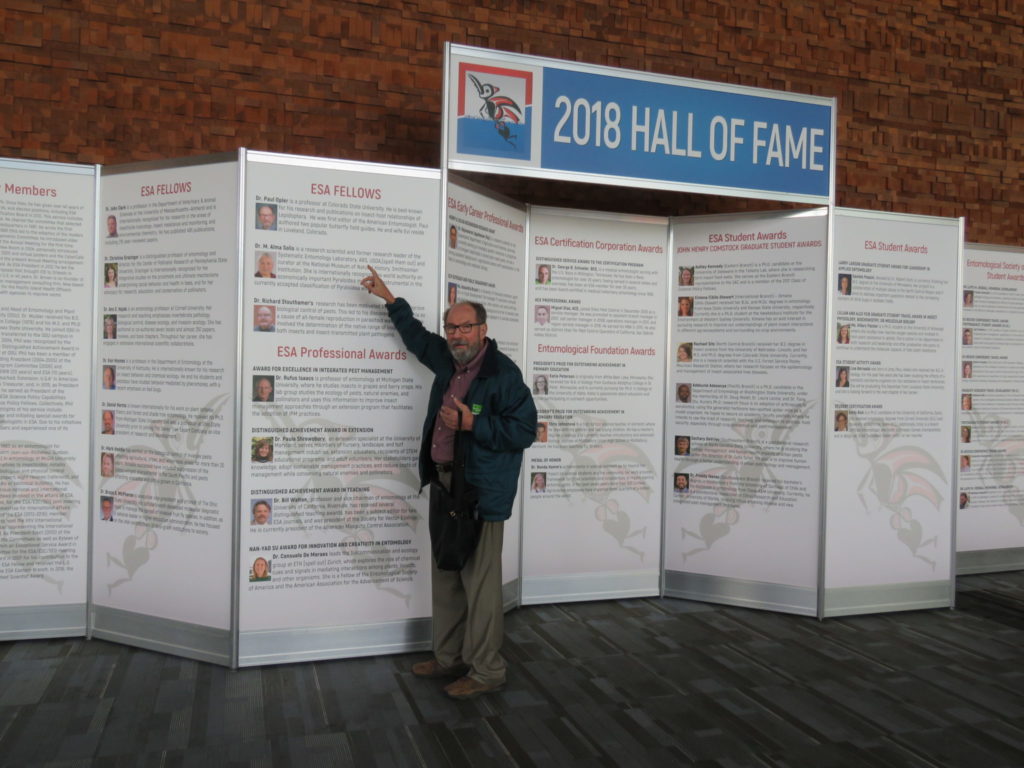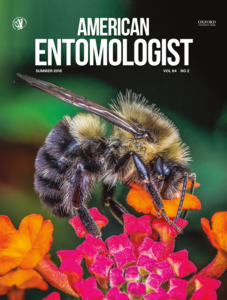
There’s no denying that 2018 has been a pretty significant year for Colorado State University’s entomologists; the highlight being the relocation of the C.P. Gillette Museum of Arthropod Diversity and its 3.5 million specimens. But the facility wasn’t the only newsmaker – in June, Paul Opler earned a lengthy feature spread in American Entomologist.
The insightful read is packed with fascinating tidbits about the life and career of the storied academic who, now semi-retired and in his 80s, acts as the assistant director of the museum on the CSU campus. From getting into BB gun fights in his youth to being tracked by a jaguar and infected by a bot fly while conducting field research in a Costa Rican jungle, his experiences prove the life of an entomologist can be one of endless adventure. Here are a few excerpts of the interview, along with a link to the entire spread.
From BB guns to butterflies
From American Entomologist, Volume 64, Issue 2
Was [being a nature counselor] a positive experience?
Oh yes. I went up to Camp Wolfboro as a scout: age 11, 12, 13. Then I became nature counselor for two years. The last year, five of us hiked from Camp Wolfboro, which was on the Calaveras River, to the Yosemite Valley, which was about a 120-mile hike, over about a six- or seven-day period. And I had a net and collected butterflies, but after the second day, my butterfly net [got left] in a car, so the rest of the hike, I caught butterflies just with my hands.
Good for you.
Much of the hike was pretty high elevation; a little bit of it was above 10,000 feet. But I caught some butterflies that were eventually described as a new subspecies in a paper that Jerry Powell and I put together when I was a senior undergraduate.
You were at Berkeley during the Vietnam War.
As a grad student from 1965 to 1970.
Did you experience any of the weirdness that was going on at the time?
We had some conflicts within our department; people were wearing buttons and badges about what side of things they were on. The people were generally anti-Vietnam War in our department, with a few exceptions. The Oakland police and National Guard were brought in because Ronald Reagan had been elected governor. One of his election promises was to get those radicals down at the university, and as soon as there were any sorts of demonstrations at Berkeley, he brought in the National Guard. Walking over to the south side of campus, sometimes we’d get pretty strong whiffs of tear gas. There were a couple of people shot and killed.
Close calls in the jungle
Were there any other hazards other than snakes?
At La Selva field station, in those days, you had to go up the river in a dugout canoe to get to the field station. It was muddy, as it always was, and I’m walking around this loop trail and taking tree phenological notes. About 20 minutes later, the station manager walked the same trail. He said, “Paul,” in Spanish, “you were tracked by a jaguar. Because there were jaguar footprints right on top of yours going in the same direction.” He was probably just curious, but if I knew a jaguar was behind me, I probably wouldn’t have bent over!
You had mentioned a bot fly. Tell me the story.
The bot fly I probably got while I was sleeping through a mosquito bite, and on the Pacific side in Guanacaste where we lived. It was so hot at night that we often slept without sheets. And I mentioned to you where I had it, right? And Dan Janzen wanted to publish a paper. This was a case of human bot fly on the Pacific side of Costa Rica, which was kind of a first, because most of the cases came out of the Atlantic side. So I told him, “No, I would prefer not, because that’s my data.” When I was in San Jose, I had it removed surgically.
Did the larva itch?
Yes, it itched.
How are we going to describe the location of this bot fly maggot?
Hmmm. [Long pause.]